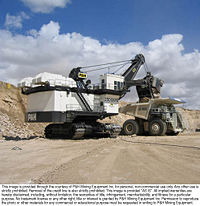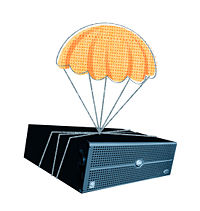Wikitip
The Wikibon Data Storage Portal contains data storage industry research, articles, expert opinion, case studies, and data storage company profiles.
Latest Information Storage Research

| 
| 
| 
|
| >>Join our Group
| >>Become a Fan
| >>Follow @Wikibon
| >>Read the Blog
|
Wikitip
Welcome to Wikibon's Data Protection Portal.
This Portal is a resource for IT professionals interested in understanding how to apply backup and recovery technologies to create a business capability that protects information in the most cost effective and appropriate manner. We invite you to be actively involved in the Data Protection Portal. Please join Wikibon, browse the portal and participate. You can write a Wikitip, Ask a Question or attend a Peer Incite Research Meeting.
The Wikibon Data Protection Information Portal contains data protection industry research, articles, expert opinion, case studies, and data storage company profiles.
Check out these Peer Incite Podcasts related to Data Protection:
1. Dave Vellante summarizes Eric Peterson of SaskEnergy's discussion about the organization's implementation of Tivoli Storage Manager (TSM) and an incremental forever backup strategy (8:36)
2. Data De-duplication: Greasing the Rails of the Backup Window. Wikibon summarizes source vs target-based De-dupe and where each makes sense for users. (6:42)


| 
| 
| 
|
| >>Join our Group
| >>Become a Fan
| >>Follow @Wikibon
| >>Read the Blog
|
Wikitip
Continuous data protection (CDP) products should be instituted by IT organizations to protect increasingly complex and critical message-based, collaborative applications (e.g., mail, workflow) as the technologies warrant. Assumptions that an application’s unique approach to restoring function in the event of human errors are becoming increasingly difficult to justify.
View Another Wikitip
Browse all Data Protection Wikitips
|
Featured Case Study

A data center within P&H Mining Equipment (P&H) had a problem recovering from a tape library that was too small. Recovery of files and emails was taking up to 72 hours, and IT was increasingly concerned that it would not be possible to recover from a major disaster. Rather than increase the capacity of the tape library from 500 to 1,000 tapes, P&H choose an innovative solution of a ten terabyte data de-duplication system from Data Domain.
read more...
|
| Data Protection Professional Alerts
|
|
|
Featured How-to Note
|
Implementing a failproof backup and recovery capability will protect an organization from data loss and downtime as a result of any of the following: hardware or software failure, power failure, natural disaster, or human error. There are two fundamental considerations when implementing a failproof backup and recovery capability: how quickly the organization needs to recover the data and how much data it can afford to lose. The challenge is finding the balance between data protection/recovery and the amount of investment required. This research note will provide guidelines to help make this determination.
read more...
|
Action Item:
Footnotes:
View Another Wikitip
|
Featured Case Study

John Charles is the CIO of California State University, East Bay (CSUEB) and Rich Avila is Director, Server & Network Operations. In late 2007 they were both looking down the barrel of a gun. The total amount of power being used in the data center was 67KVA. The maximum power from the current plant was 75kVA. PG&E had informed them that no more power could be delivered. They would be out of power in less than six months. A new data center was planned, but would not be available for two years.
read more...
|
| Storage Professional Alerts
|
|
|
Featured How-To Note
|
A main impediment to storage virtualization is the lack of multiple storage vendor (heterogeneous) support within available virtualization technologies. This inhibits deployment across a data center. The only practical approach is either to implement a single vendor solution across the whole of the data center (practical only for small and some medium size data centers) or to implement virtualization in one or more of the largest storage pools within a data center.
read more...
|
View Another Wikitip
Browse all Mobile Enterprise Wikitips
|
Featured Case Study

Enterprises are showing a strong interest on wireless voice technology over the standard WiFi networks for its attractive features such as lower phone bills, centralized management, or fast deployments. However these wireless voice networks are susceptible to usual attacks like viruses, spam, phishing, hacking, stolen data, denial of service (DoS), voice injections, man in the middle attacks, call hijacking, eavesdropping etc. The security of these networks become a major concern for enterprises because IT managers have no or very little knowledge how to protect voice networks.
read more...
|
| Mobile Enterprise Professional Alerts
|
|
|
Featured How-To Note
|
Wireless email is an important business tool for today's enterprises and an entrepreneurial solution to maximize the employees’ business potential and gain a competitive edge. Since businesses now send as much as 60% of their business-critical data via email, accessing emails wirelessly means business success for many organizations by providing rapid customer communication, faster decision-making and collaboration from distant places.
read more...
|







